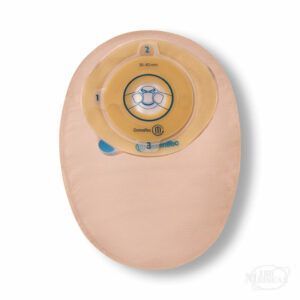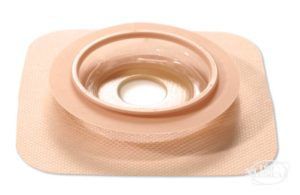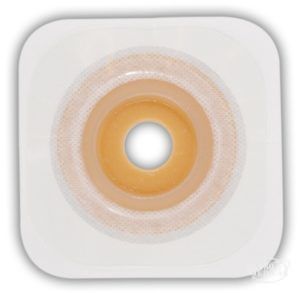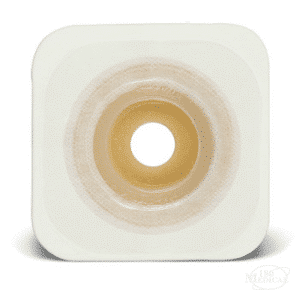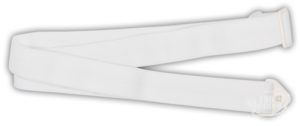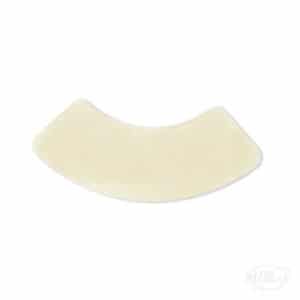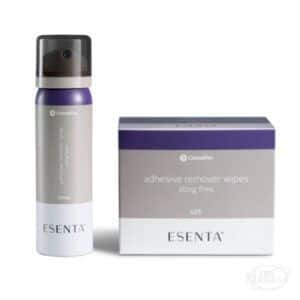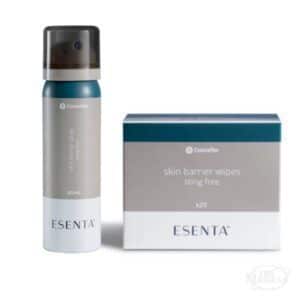
If you’re living with an ostomy, you probably already know that one of the most common issues impacting ostomates is skin irritation around the stoma. While peristomal skin problems are common, they don’t have to be the norm for you.
Let’s go over some of the common causes of peristomal skin issues and troubleshoot these issues with some simple changes to your routine and product solutions.
The Importance of Hygienic Peristomal Skin Care
After ostomy surgery, the first thing you usually have to learn is how to change and empty your ostomy pouch. In addition to your new ostomy pouching routine, your ostomy nurses will likely talk to you about the importance of proper, hygienic peristomal skin care.
So why is it so important to take good care of the skin around your stoma? Peristomal skin irritation isn’t just uncomfortable and frustrating. It can also cause damage. In some cases, it can even lead to infection. Plus, it can even make it harder for your pouching system to attach, especially if the skin is raw or moist.
The best way to avoid issues like this is with a little bit of prevention by practicing good hygiene as well as using the best ostomy products to fit your unique needs.
How should the skin around the stoma look?
One topic of concern that many new ostomates may have is wondering how their skin around the stoma should look normally.
Ideally, the peristomal skin will look just like the skin anywhere else on your abdomen or body. Healthy peristomal skin will not present visible issues such as:
- Skin color changes, such as red, pink, purple, etc.
- Rashes
- Raised welts or bulges
- Blisters or pimples
- Bumpiness
- Moist, raw, or weepy skin around stomas
- Broken skin
Also, if you have healthy skin around the stoma, it should not be uncomfortable, painful, itchy, or sore.
How do you heal skin around a stoma and other peristomal skin problems?
In order to heal skin around the stoma, the cause of the issue needs to be diagnosed first. This means you need to consult with a healthcare professional. If you’re experiencing any of the above-listed symptoms that indicate complications in the skin around the stoma, you should speak with a doctor or a WOCN (Wound, Ostomy, Continence Nurse).
If you’re not sure who to call or contact, reach out to 180 Medical. Our team of Ostomy Specialists will gladly connect you to speak with a certified ostomy nurse. We want you to live your healthiest and best life.
However, in the meantime, take a look below to learn more about common causes of complications with the skin around the stoma.
Common Causes of Peristomal Skin Problems
Have you noticed that the skin around your stoma feels or appears hot, wet, weepy, raw, red or pink, itchy, or sore? You may be dealing with a skin problem related to your ostomy.

But why? Ostomy skin irritation can happen for a variety of reasons. Here are a few of the common causes.
Ostomy Leakage
One of the top ways stoma irritation and peristomal skin problems occur is due to ostomy leakage. This means that leakage of stool or urine gets under the skin barrier and makes repeated contact with the healthy skin underneath. Over time, the affected peristomal skin will become irritated and begin to break down.
This is often due to having the incorrect size or type of ostomy skin barrier. For example, if you have skin folds or creases around your stomal area or a recessed stoma, a standard flat skin barrier may not work. Stool or urine could leak from your colostomy, urostomy, or ileostomy.
Skin Allergies or Sensitivities
Some ostomates deal with immediate skin irritation after applying their ostomy skin barrier. This could indicate an allergy or sensitivity to either an element in the barrier itself or to the adhesive on the barrier.
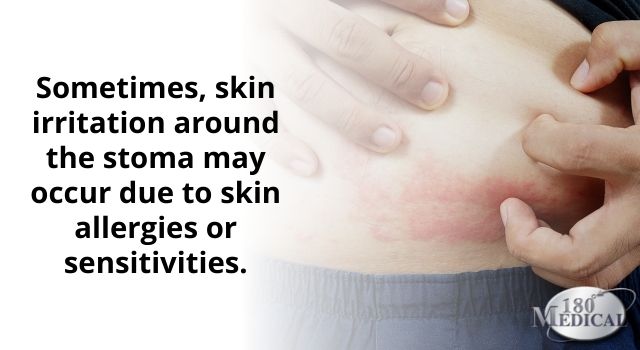
Skin Stripping Due to Adhesives
However, many people who deal with irritation directly under their skin barrier may be irritating their peristomal skin by removing their barriers too quickly or using a barrier adhesive that strips away the top healthy layers of skin.
Frequent skin barrier changes may also irritate and strip the skin, causing peristomal skin problems.
Excess Pressure Around the Stoma
Some types of irritation around the stoma may occur due to above-average pressure on the area. This could be due to not using the correct ostomy product, or it may be due to using an ostomy belt that’s too tight. Sometimes wearing clothing that’s too tight can cause this issue as well.
Poor Ostomy Hygiene
Part of living with an ostomy means you have to properly care for and clean your stoma regularly. If you’re not cleaning the skin correctly, this could end up causing rash, redness, or infection over time.
On the other hand, if you’re cleaning too vigorously or using soap or another product with oil, fragrance, or perfumes around the stoma, this could also cause peristomal skin irritation.
Tips for Troubleshooting Peristomal Skin Problems
Tip 1. Talk to a certified ostomy nurse (WOCN) about any peristomal skin complications (PSC).
First, if you’re experiencing a concerning issue related to your ostomy or if you’re seeing evidence of peristomal skin complications, you should speak with a qualified medical professional. This could be your doctor, physician assistant, or ostomy nurse.
A qualified medical professional can diagnose what’s going on and offer a personalized solution. In addition, if you have an infection, a healthcare professional can prescribe medications if necessary.
Also, 180 Medical can connect you to a team of certified ostomy nurses. They are qualified to help you with any questions or concerns regarding your ostomy or peristomal skin issues.
Tip 2. Practice good hygiene by cleaning around the stoma regularly.
Keeping your stoma and peristomal skin clean and healthy is a huge part of taking good care of your ostomy.
While your doctor or ostomy nurse is the best resource for any medical advice, you can start taking basic steps at home to improve your ostomy hygiene.
Remember, you can shower with your pouch on or off, although you may not be able to control your stoma output.
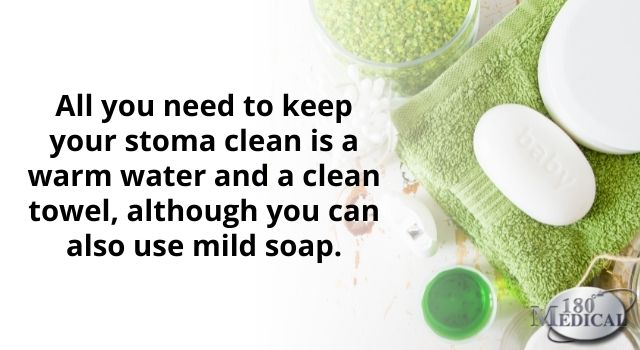
How to Clean the Skin Around Your Stoma
In between pouch changes, simply use warm water and a washcloth to clean around the stoma. Next, take a clean, dry towel to pat away any moisture. Take care not to rub or scrub with it. Just pat or dab gently.
Some people like to use soap to clean their peristomal skin, which is usually fine. Just be sure to use a mild soap that doesn’t have any fragrance, deodorants, or harsh chemicals. Additionally, steer clear of exfoliating soaps that may have beads or walnut shells. These can scrub the skin, removing the top healthy layers, which can then cause issues with getting your ostomy pouching system to adhere properly. Plus, it may make the skin raw and more sensitive.
Also, you may want to avoid cleansing wipes or baby wipes, specifically the ones that have lanolin, oils, alcohol, or other harsh chemicals.
Tip 3. Make sure you’re using the right ostomy supplies for your needs.
One of the next things to look at when you’re finding yourself with ostomy-related skin irritation is what types and sizes of ostomy supplies and accessories you’re currently using.
Examine Ostomy Skin Barrier Size and Type
First, you’ll want to take another look at the size and fit of your current skin barrier, also known as an ostomy wafer. For instance, if you’re noticing irritation due to frequent leakage, you may want to re-measure your stoma to make sure you’ve got the right size.
Next, examine your skin while you’re standing and sitting. Do you have any creases or folds in the skin around your stoma? Is your stoma recessed or flush with the skin rather than protruding? If so, reach out to our Ostomy Specialists at 180 Medical. We’ll gladly help you navigate your ostomy product options. Plus, we can send you something to help you determine the correct size and shape of your stoma.
Then, we can take a look at options that may work best for you. For instance, if you have difficulty trimming your skin barrier to fit your stoma perfectly, you may want to try a skin barrier with Convatec Moldable Technology™. This is an easy and skin-friendly skin barrier available in both flat and convex, which may help improve the health of your peristomal skin as well as the fit of your ostomy pouching system.
Try Out Some Ostomy Accessories That May Help
Ostomy accessories are any type of ostomy supplies that can complement your current pouching system. This could include ostomy support belts, stoma powder, barrier wipes, or even barrier strips.
What Ostomy Supplies Do I Need?
First, if you’re using an ostomy belt, ensure it’s snug but never too tight. You’ll want something that feels supportive but comfortable and breathable at the same time.
Also, if you’re dealing with leakage or adhesive issues, you might consider using skin-friendly, water-resistant barrier strips. For instance, ease™ Strips are composed of a hydrocolloid material that’s great for use to keep your barrier secure.
Also, some ostomates may find some relief from adhesive-related irritation by using certain kinds of ostomy wipes, such as barrier wipes and adhesive removers. Barrier wipes can provide a thin barrier of film on the skin, which protects the skin from irritation due to adhesive. Adhesive remover wipes work by removing irritating adhesive build-up with an alcohol-free formula.
However, these are just a few of the many ostomy products that may aid your pouching routine. The best way to know which ostomy supplies will work best for you is to speak with an ostomy nurse. Also, our Ostomy Specialists can help you with finding a product that’s covered by your insurance.
Where Can I Get Ostomy Supplies Covered by Insurance?
Need more help finding the right ostomy supplies to reduce the occurrence of peristomal skin problems? Contact us today. 180 Medical specializes in supplying high-quality ostomy products paired with compassionate, reliable service.
Disclaimer: The information provided in this article is not medical advice. It is not intended as a substitute for consultations with qualified healthcare professionals. For personalized questions requiring medical advice, please seek help from your medical professional or a certified Ostomy Nurse.
